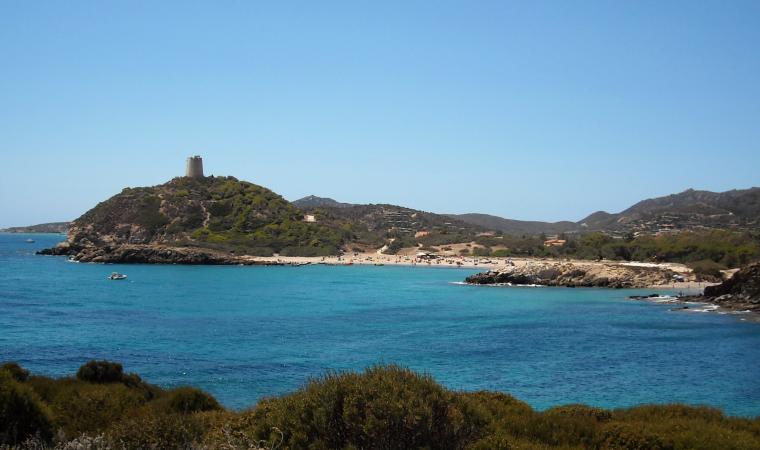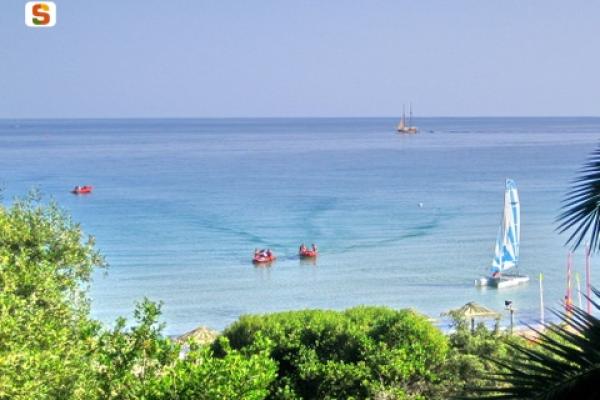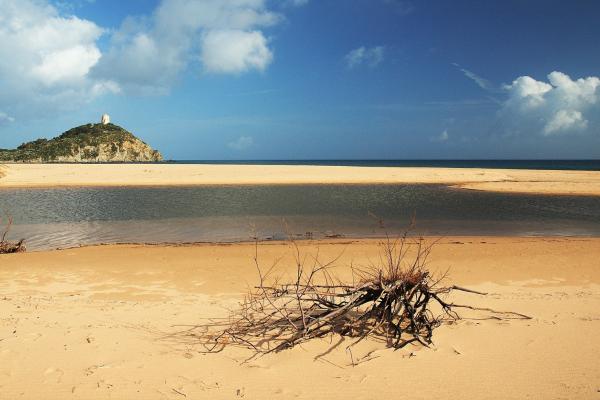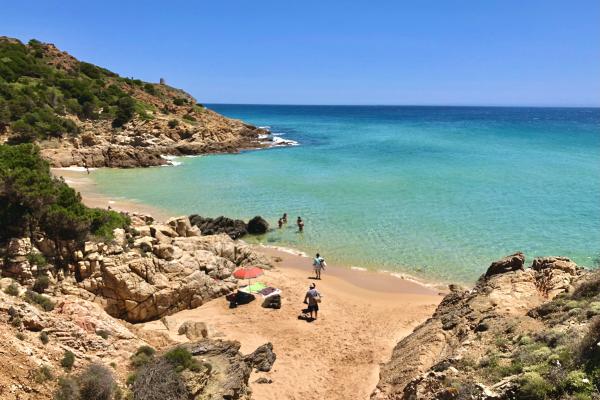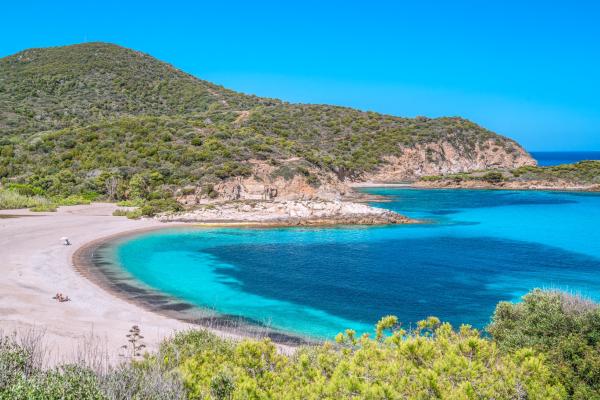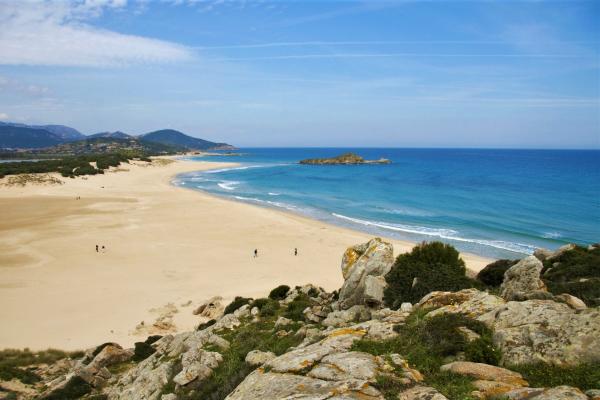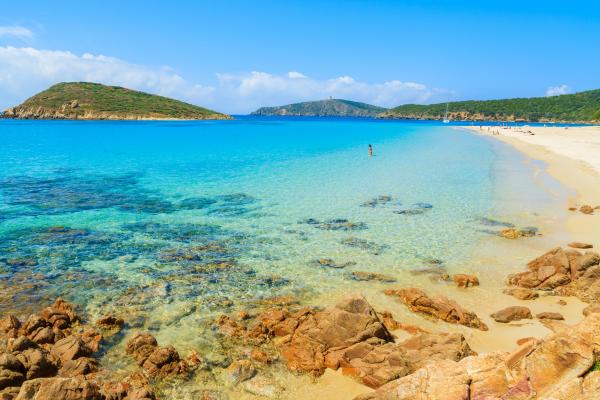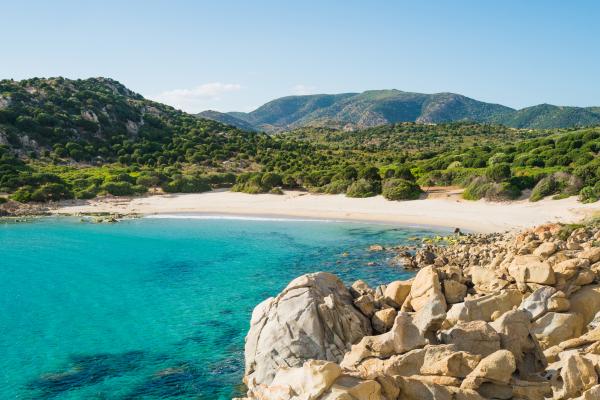A vastness of breath-taking natural beauty, from the beaches of Chia to the green mountains leading to the sea. The territory of Domus de Maria is characterised by a long stretch of coastline with sand dunes dotted with centuries-old junipers, imposing granite peaks with lush forests and hills covered with Mediterranean scrub releasing fragrant essences and vibrant colours. Built in the 18th century, the village today counts 1,700 inhabitants. The village and the coast come to life each year during the food fairs (dedicated to goat, wild boar, figs and fish) and local festivals. At the beginning of October, the patron saint of the Madonna del Rosario is celebrated, whilst for Pentecost there is a five-day event with a poetry competition in the Campidanese dialect and a procession of the Holy Trinity, accompanied by floats and knights in traditional costume.
The coast of the Chia village is seven kilometres long and a true stretch of paradise. The Torre di Chia grants access to a long sandy expanse interspersed with small headlands and lapped by the emerald green sea. To the west, cross the beaches of Sa Tuerra, Porto Campana, De Su Sali up to the Su Giudeu - the most beautiful of all and often chosen as the setting for TV commercials. Behind is the Stagno di Spartivento, home to many rare species. In front of the beach, a small island can be spied, accessible thanks to the shallow waters. In a sheltered inlet of the western extremity is Cala Cipolla. From here, the Capo Spartivento lighthouse can be reached, offering views of the Sulcis coast. The entire stretch of coast offers every comfort, rendering it a dream holiday destination. Take a dive not only in the sea, but also into the archaeology, where Chia now stands, the Phoenician-Punic (then Roman) town of Bithia once flourished. Amongst the ruins unearthed, the remains of a Tophet, a children’s cemetery, the road that led to the ancient city of Nora, and the necropolis, where one also stood the temple of the god Bes, whose statue is preserved at the National Archaeological Museum of Cagliari.
Another Domus marvel consists in the woods of holm oak, conifers and Mediterranean scrubland of Is Cannoneris, an oasis for hikers. The green expanse stretches beyond the horizon, crossed by a road and hiking trails. The forest is a wildlife oasis with specimens of Sardinian deer and fallow deer, with the flight of a golden eagle and a peregrine falcon a delightful surprise overhead. The landscape attractions are endless - particular rocky forms, sheer cliff faces, waterways, ancient trees and rare plant species such as enormous broom. Is Cannoneris is embellished with remnants of prehistoric civilisations, including the necropolis of Montessu and the sacred well of Val Tattino, along with the entire territory of Domus, as evidenced by the Muraghe Baccu Idda. Industrial archaeology is also a protagonist, with various abandoned mines.






